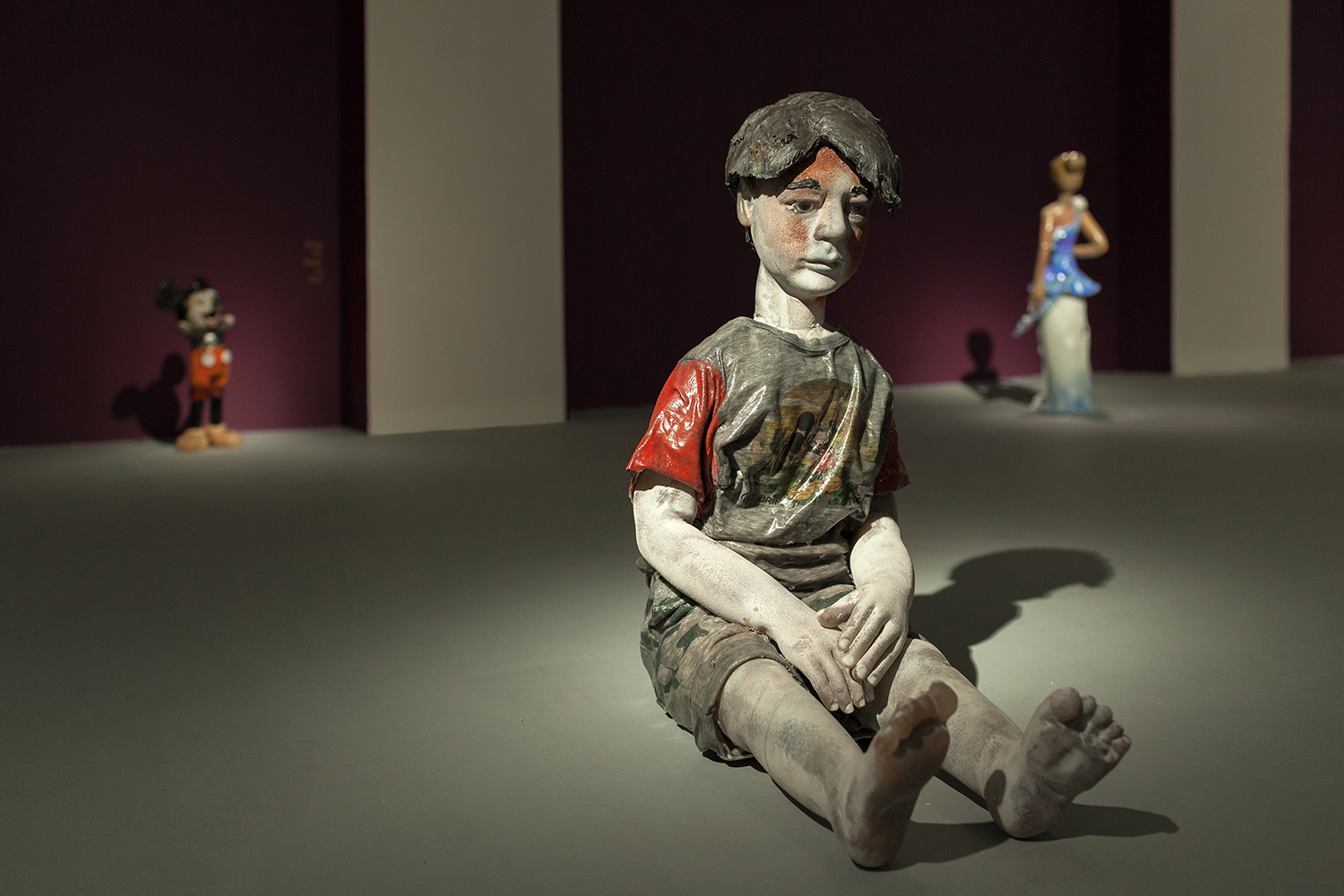A STILL LIFE
SiC! Gallery. BWA Wroclaw, Poland
Contexts. Our perception of the world, its structure and nuances constituting it, depends on the context. In our turbulent times – when various contents are interwoven, forming hybrids of real information/facts – it is the context that becomes the only connector between the recipient and full knowledge which can be easily accepted as true. Because we want to assimilate sensations quickly. The meaning of words we use and images deprived of context in the ethos of entities professionally involved in distributing information gets distorted and creates a misleading picture of reality. In the era of optical fiber, thousands of shared hyperlinks and tags, we are unable to conceal information, but we can aptly manipulate it, shape it to lead to confusion or excess, overstate or understate, use it to distract attention or attract to the banal. But what if our only chance for Truth – the context – can also be created by positioning inter-dependencies between contents, ideas, images and symbols to educate the recipient whose ignorance and apathy are his sole survival strategies? How to grasp yet another piece of information in which violence and fear are juxtaposed with an advertisement promoting exotic, unforgettable holidays in the Far East?
Objecting to the hypocrisy of the discredited world system, the American artist John Sleepy Moran attempts to regain control in the context of his creative practice by claiming the right to aggressively re-contextualize what he says has been stolen and force-fed back to him throughout his entire life by advertising and marketing. Moran’s work may be seen as universal contestation of the global political, economic and social system. In addition to that, his exhibition “A Still Life” at SiC! BWA Gallery in Wrocław presents the artist’s private narration in which he shows his homeland, America – once a global superpower – in an ironic, satirical context of a new “third world” country. Low economic development, low life expectancy, high rates of poverty, disease and violence, as well as tumultuous and unstable governments are factors according to which countries of the Western World used to ascribe the derogatory term to developing countries that required aid. Today, all the criteria seem to fit the situation in the United States. The increasing wealth gap is “low economic development”. Among low-income social groups, such phenomena as low life expectancy, poverty, disease and violence are commonplace, and the current government can be described as “tumultuous” and “unstable”. Such a system is unstable. And so are John Moran’s works: inspired by both the contemporary and the past, pop culture and politics, they are both humorous and tragic, refined and unkempt.
“A Still Life”: the double meaning of the title invites us to an uncomfortable, irreverent reality. John Moran’s statuesque, hyper-realistic sculptures conjure images full of symbols deriving from mass media, news bulletins, advertising. We enter the universe of a glass-frozen still life in which the theme revolves around death. The artist also focuses on such topical and historically repetitive issues as social inequality, gender inequality, the refugee crisis, human trafficking and racism. The other meaning of the title implies that as humans we are not progressing, we are still stuck in the same weaknesses and oppression. John’s naturalistic aesthetic is also influenced by children’s imagination and iconography – the dramatic fate of contemporary children is inspiration for his creative work. If we add to that all the religious and street symbols he uses, we end up with a shocking blend which the artist uses as a deliberate strategy for pulling us out of passivity and apathy, waking us up from lethargy. A blend intended to arouse a number of contradictory, layered emotional responses. I pull inspiration from everywhere and mash things together, not poetically but aggressively [...] into a cohesive and concise mass of wreckage that makes it hard to turn away, says John Sleepy Moran.
John criticizes but he does not accuse. He does not attack the recipient as an individual but rather highlights the collective processes of denial and approval of conformism. In many respects he does not aspire to change the world but he is critical towards it in the hope that people will start thinking beyond pure beauty and entertainment. The time has come to ask questions. The time has come to re-establish the gravity of even the most brutal, dismal, true imagery and content. Moran achieves it by putting his sculptures in the ethical and aesthetic context of an art gallery. It is the subject matter that is in essence shocking; the work is a reflection of that, says the artist.
-Dominika Drozdowska


































